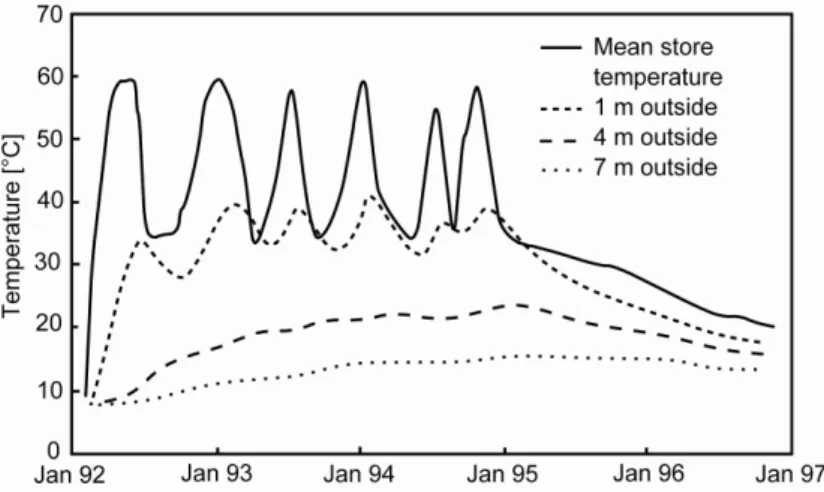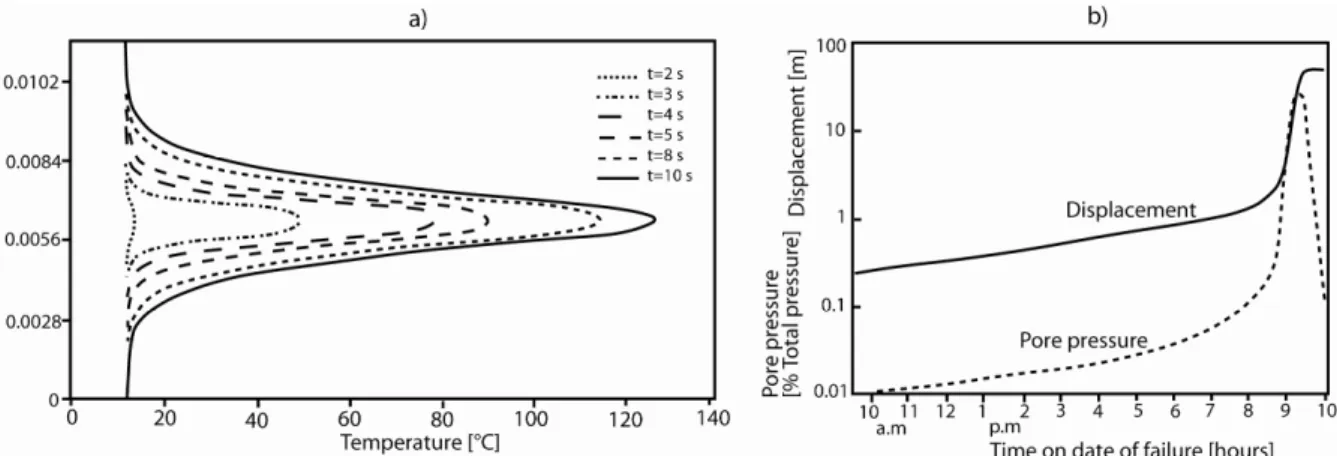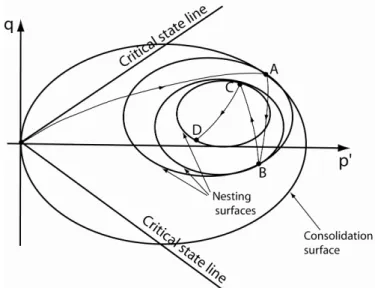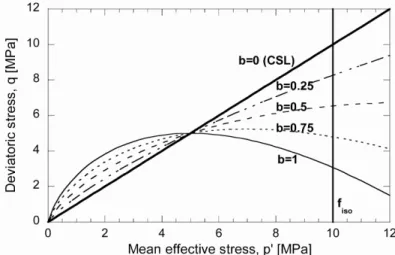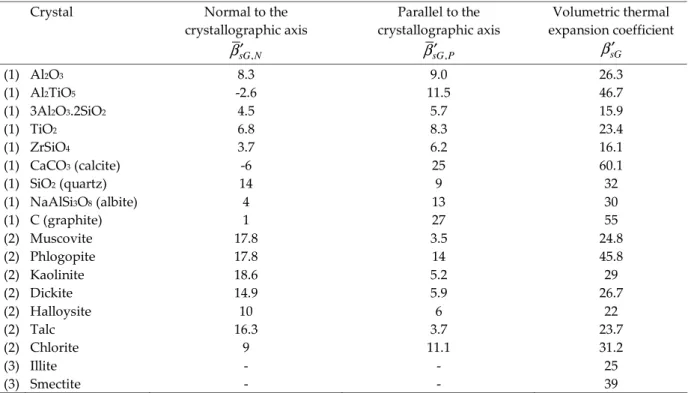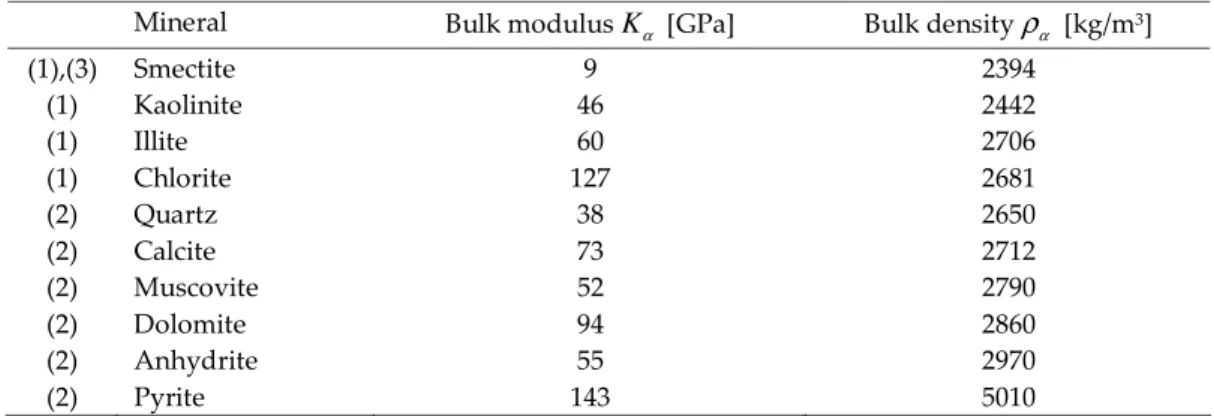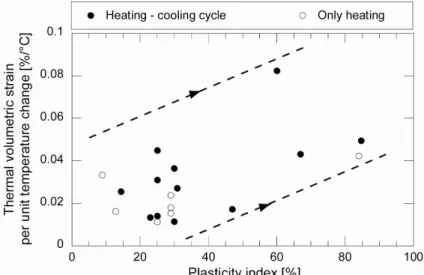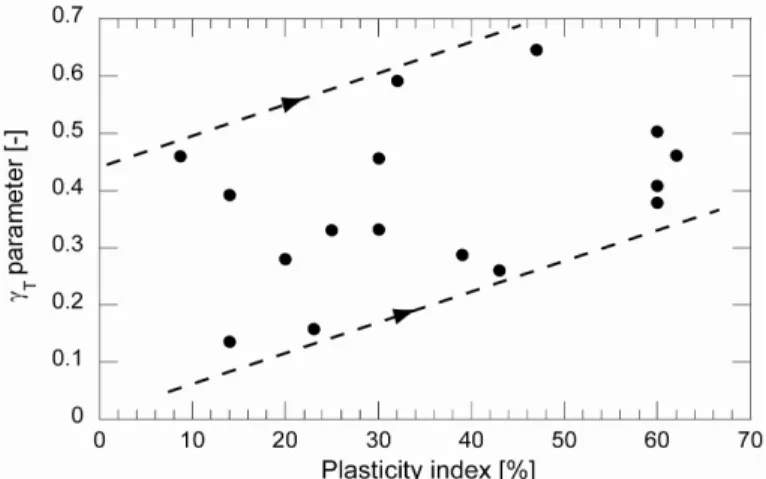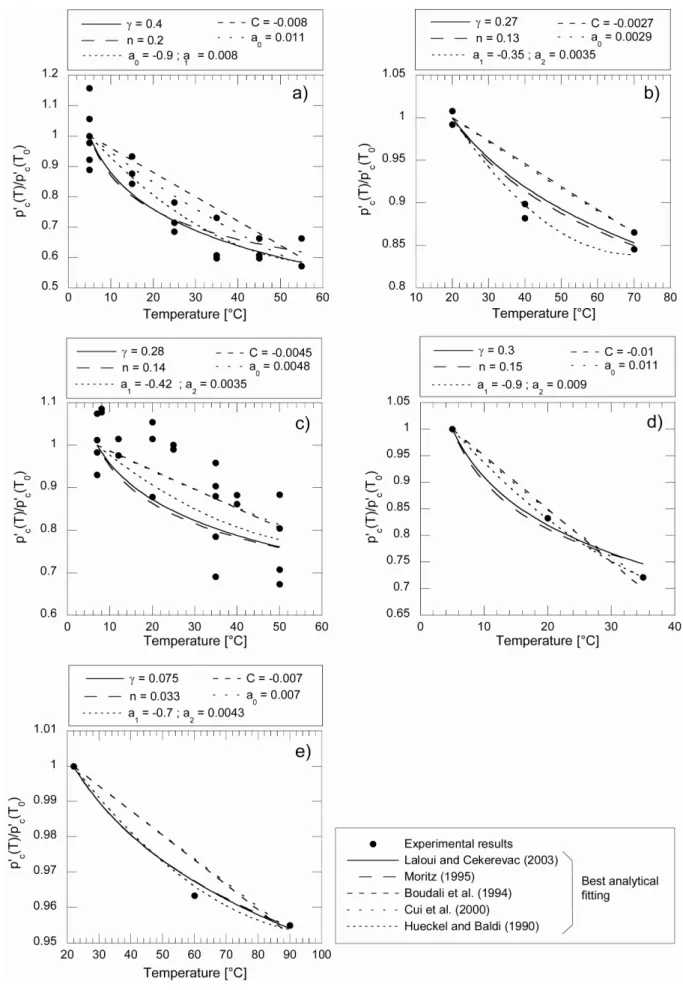POUR L'OBTENTION DU GRADE DE DOCTEUR ÈS SCIENCES
PAR
ingénieur civil des constructions, Université de Liège, Belgique et de nationalité belge
acceptée sur proposition du jury: Prof. J.-F. Molinari, président du jury
Prof. L. Laloui, directeur de thèse Prof. R. Charlier, rapporteur
Dr V. Labiouse, rapporteur Dr P. Marschall, rapporteur
Saturation States:
Application to Nuclear Waste Disposal
Bertrand FRANçOIS
THÈSE N
O4188 (2008)
ÉCOLE POLYTECHNIQUE FÉDÉRALE DE LAUSANNE
PRÉSENTÉE LE 14 NOVEMBRE 2008À LA FACULTE ENVIRONNEMENT NATUREL, ARCHITECTURAL ET CONSTRUIT LABORATOIRE DE MÉCANIQUE DES SOLS
PROGRAMME DOCTORAL EN MÉCANIQUE
Suisse 2008
à mes parents à ma soeur
Je suis intimement convaincu que ce sont les échanges et les contacts humains qui font de nous ce que nous sommes. Ce travail est le fruit d’une succession de rencontres et de discussions, scientifiques mais surtout humaines. A ce titre, j’aimerais remercier toutes les personnes qui, de près ou de loin, ont contribué au bon déroulement de cette thèse.
Il me tient tout particulièrement à cœur de consacrer mes premiers remerciements à Monsieur le Professeur Lyesse Laloui qui est la source et le fil conducteur de ce travail de recherche. Le cheminement de ce travail s’est construit à partir d’une certaine autonomie scientifique encadrée par ses conseils avisés. L’atmosphère stimulante de son groupe de recherche a permis un épanouissement scientifique propice au bon déroulement de cette thèse. Qu’il trouve dans ce travail ma reconnaissance pour tout ce qu’il m’a apporté tant d’un point de vue professionnel que personnel.
J’ai eu la chance d’évoluer dans une structure de recherche performante et conviviale. J’aimerais sur ce point remercier vivement Monsieur le Professeur Laurent Vulliet pour l’accueil qu’il m’a réservé au sein de son laboratoire. Je lui suis également très reconnaissant pour la confiance qu’il m’a accordée dans la tâche d’assistanat du cours de Mécanique des Sols.
L’aboutissement de ce travail est le fruit de nombreuses rencontres et échanges scientifiques qui ont fortement influencé ma vision des choses sur les sujets abordés dans cette dissertation. Je pense, tout particulièrement, à Monsieur le Professeur Robert Charlier qui m’a fourni l’outil de calcul utilisé dans cette thèse, m’a accueilli à plusieurs reprises au sein de son groupe de recherche et m’a fait part de ses conseils éclairés. C’est aussi beaucoup grâce à lui que j’ai pu effectuer ce travail à Lausanne. Je le remercie pour tout cela et également pour m’avoir fait l’honneur d’accepter d’évaluer ce travail de doctorat. Dans le même cadre, le dernier volet de cette thèse n’aurait pas pu voir le jour sans l’aide et les conseils éclairés de Monsieur le Docteur Frédéric Collin à qui je dois beaucoup pour l’implémentation et l’utilisation du code de calcul. J’ai également très apprécié les contacts humains, avec lui et avec toute l’équipe du Professeur Charlier, qui ont découlé de cette collaboration.
J’ai retiré beaucoup d’enseignements dans les collaborations scientifiques qui ont agrémenté ce travail. Je pense tout particulièrement aux membres de l’équipe de recherche du laboratoire LMGC de l’Université Montpellier II, Messieurs les Professeurs Christian Saix et Saïd El Youssoufi et le Docteur Simon Salager, qui ont fortement contribué au bon déroulement de la campagne expérimentale. Mes remerciements s’adressent également à Monsieur le Docteur Lorenzo Sanavia, de l’Université de Padoue, pour sa collaboration efficace.
Je remercie sincèrement Messieurs les Docteurs Vincent Labiouse et Paul Marschall d’avoir accepté de réviser et d’évaluer cette thèse de doctorat. Dans la problématique traitée dans ce travail, leur expérience liant la recherche et les attentes des agences nationales est précieuse. Merci également à Monsieur le Professeur Jean-François Molinari d’avoir accepté de présider le jury de cette thèse.
Bonnard. Il m’a apporté une rigueur scientifique et une approche qui allie le fondamental et le terrain. Au même titre, j’aimerais mentionner et remercier Monsieur le Docteur Moustafa Gencer pour le contact direct qu’il m’a apporté avec la pratique du géotechnicien.
J’ai pu bénéficier, tout au long de ce travail, de l’aide de plusieurs stagiaires: David Ubals Picanyol, Clément Laurent et Victor Martin. Merci pour vos contributions efficaces et précieuses. La convivialité et la bonne humeur dans laquelle s’est effectuée cette recherche a enjolivé les quatre années passées au sein des Laboratoires de Mécanique des Sols et des Roches. Ce n’est donc pas à des collègues, mais plutôt à une bande de copains, que je consacre ces remerciements qui me tiennent tout particulièrement à cœur. Mathieu, Hervé et Azad (alias « The Lyesse’s angels »), un chaleureux merci pour la conviviale émulation scientifique qui a découlé de notre collaboration efficace. Emilie, Suzanne, Federica et Irène, mille mercis pour cette touche de féminité dans ce monde d’ingénieur. Julian, Rafal, Patrick, Simon, Alessio, Laurent, Marta, Claire, Stefano, Nina et Véronique, ce fut un plaisir de partager tous ces bons moments en votre compagnie. Une petite pensée à l’entourage du LMS-R : Solène, Azin, Mohamed, Jan, Jennifer, Eva, Jonathan, Pénélope et … Joachim ;-). Mille mercis au reste de l’équipe qui a contribué à faire de mon séjour à Lausanne, une magnifique aventure.
J’ai la précieuse chance de pouvoir compter sur des amis qui me sont chers. Merci au kot 23 (Thom, Oli, Phred, Ad, Laurence, Mira et Angela) pour la fidélité de leur amitié. Une pensée toute particulière également à l’Orval Pro Tour.
Je n’ai pas de mots assez forts pour exprimer ma reconnaissance envers le soutien inestimable que m’a apporté ma famille dans la réalisation de ce travail. Que mes parents et ma sœur trouvent dans ce manuscrit, que je leur dédie, le fruit de leur affection au quotidien. Ils sont les racines qui ont permis aux bourgeons d’éclore.
Enfin, rien n’aurait été possible sans l’amour, le soutien de tous les instants et la compréhension de ma douce complice. Anne-Christine, amoureusement, merci.
CONTENTS…...I ABSTRACT…….. ...V RESUME………. ...VII LIST OF SYMBOLS...IX
CHAPTER 1 THERMO-PLASTICITY IN SOIL: AN INTRODUCTION...1
1.1 GENERAL INTRODUCTION... 2
1.1.1 Thermal effect in soils and nuclear waste disposal ... 2
1.1.2 Objectives ... 3
1.1.3 Outline of the thesis ... 4
1.2 THM APPLICATIONS IN GEOTECHNICS... 5
1.2.1 Temperature and environmental geomechanics ... 5
1.2.2 THM applications... 5
SECTION I
THERMO-MECHANICAL CONSTITUTIVE BEHAVIOUR OF
SATURATED FINE-GRAINED SOILS ...13
CHAPTER 2 ACMEG, AN ISOTHERMAL CONSTITUTIVE MODEL...15
2.1 INTRODUCTION... 16
2.2 SOIL ELASTO-PLASTICITY... 18
2.2.1 Some concepts of plasticity in soils... 18
2.2.2 Cam-Clay family models ... 21
2.2.3 Family of advanced models... 28
2.3 THE ACMEG MODEL... 32
2.3.1 Introduction ... 32
2.3.2 The successive improvements ... 33
2.3.3 The constitutive relations... 40
2.3.4 Numerical validation... 45
2.4 CONCLUSIONS... 49
CHAPTER 3 ACMEG-T, A NON-ISOTHERMAL MECHANICAL CONSTITUTIVE MODEL...51
3.1 INTRODUCTION... 52
3.2 THERMAL EFFECT ON MICROSTRUCTURAL ASPECTS OF CLAYEY SOILS... 52
3.2.1 Introduction ... 52
3.2.2 Interactions in clay-water system ... 53
3.2.3 Temperature effect on the clay-water system ... 58
3.3 EXPERIMENTAL EVIDENCE ON THERMO-MECHANICAL BEHAVIOUR OF CLAYEY SOILS... 63
3.3.1 Soil response to heating-cooling cycles... 63
3.3.2 Temperature effect on compression behaviour ... 66
3.3.3 Temperature effect under undrained conditions... 70
3.3.4 Temperature effect on shearing behaviour... 72
3.3.5 Conclusions... 75
3.4 RELEVANT CONTRIBUTIONS TO THE THERMO-MECHANICAL CONSTITUTIVE MODELLING OF SOILS... 75
3.5 THE ACMEG-T MODEL,... 76
3.5.1 Introduction ... 76
3.5.5 Validation of the ACMEG-T constitutive model ... 87
3.6 CONCLUSIONS... 92
SECTION II
THERMO-MECHANICAL CONSTITUTIVE BEHAVIOUR OF
UNSATURATED FINE-GRAINED SOILS...93
CHAPTER 4 THERMAL EFFECT ON THE MECHANICS OF UNSATURATED SOILS...95
4.1 INTRODUCTION... 96
4.2 ISOTHERMAL BEHAVIOUR OF UNSATURATED SOILS... 96
4.2.1 Partial saturation in soils... 96
4.2.2 Stress frameworks... 98
4.2.3 Mechanical behaviour ... 100
4.2.4 Water retention behaviour... 107
4.2.5 Constitutive modelling of unsaturated soils ... 109
4.3 NON-ISOTHERMAL BEHAVIOUR OF UNSATURATED SOILS... 111
4.3.1 Mechanical behaviour ... 111
4.3.2 Water retention behaviour... 113
4.4 CONCLUSIONS... 117
CHAPTER 5 EXPERIMENTAL CHARACTERIZATION OF THE THM BEHAVIOUR OF SOILS...119
5.1 INTRODUCTION... 120
5.2 LITERATURE ANALYSIS ON THE THM EXPERIMENTAL DEVICES... 120
5.2.1 Introduction ... 120
5.2.2 Overview of experimental methods ... 121
5.2.3 The developed THM oedometric cell ... 125
5.3 EXPERIMENTAL PROGRAM... 136
5.3.1 Introduction ... 136
5.3.2 Preparation and characteristics of the material... 136
5.3.3 Experimental layout... 137
5.3.4 Experimental results ... 138
5.3.5 Analysis of the results ... 140
5.3.6 Comparison with other experimental results on Sion silt ... 142
5.4 CONCLUSIONS... 145
CHAPTER 6 ACMEG-TS, A CONSTITUTIVE MODEL FOR UNSATURATED SOILS UNDER NON-ISOTHERMAL CONDITIONS...147
6.1 INTRODUCTION... 148
6.2 PREVIOUS CONSTITUTIVE CONTRIBUTIONS... 148
6.2.1 The existing constitutive models... 148
6.2.2 Discussion on the existing constitutive models ... 149
6.3 THE ACMEG-TS MODEL... 150
6.3.1 Mechanical constitutive part ... 150
6.3.2 Water retention constitutive part... 154
6.3.3 Some typical responses predicted by ACMEG-TS ... 157
6.3.4 Validation of the ACMEG-TS constitutive model ... 160
6.4 CONCLUSIONS... 171
SECTION III
APPLICATION TO NUCLEAR WASTE DISPOSAL...173
7.2.2 Equilibrium and balance equations... 177
7.2.3 Constitutive relations ... 178
7.3 FINITE ELEMENT FORMULATION... 181
7.4 VALIDATION OF IMPLEMENTATION OF THE ACMEG-TS MODEL... 183
7.5 NON-ISOTHERMAL CONSOLIDATION... 184
7.5.1 Introduction ... 184
7.5.2 Results... 185
7.6 CONCLUSIONS... 187
CHAPTER 8 NUMERICAL SIMULATION OF PROCESSES RELATING TO NUCLEAR WASTE DISPOSAL... ...189
8.1 INTRODUCTION... 190
8.2 GOAL AND PRINCIPLE OF UNDERGROUND NUCLEAR WASTE DISPOSAL... 190
8.2.1 Introduction ... 190
8.2.2 The multibarrier concept... 191
8.2.3 Thermo-hydro-mechanical processes... 193
8.2.4 Large scale in-situ simulation tests... 194
8.2.5 Conclusions... 195
8.3 MODELLING OF BOUNDARY VALUE PROBLEMS... 195
8.3.1 Introduction ... 195
8.3.2 The Boom clay formation... 196
8.3.3 TIMODAZ benchmark ... 201
8.3.4 ATLAS in-situ test... 210
8.3.5 FEBEX in-situ test... 222
8.4 CONCLUSIONS... 242
CHAPTER 9 CONCLUDING REMARKS...243
9.1 CONCLUSIONS... 244 9.1.1 Constitutive study... 244 9.1.2 Experimental study... 245 9.1.3 Numerical study... 246 9.2 PERSPECTIVES... 247 REFERENCES….. ...249
APPENDIX A STRESS-STRAIN CONVENTIONS...269
A.1 STRESS TENSOR... 269
A.2 STRAIN TENSOR... 271
A.3 REFERENCES... 272
APPENDIX B SOLVER OF THE CONSTITUTIVE LAW...273
B.1 INTRODUCTION... 273
B.2 FORTRAN SUB-ROUTINES... 275
B.3 REFERENCES... 285
APPENDIX C NUMERICAL APPLICATION OF TEMPERATURE EFFECT ON INTERACTION STRESS BETWEEN PARTICLES...287
C.1 INTRODUCTION... 287
C.2 ISOTHERMAL ASPECTS... 287
C.3 TEMPERATURE EFFECT... 289
C.4 REFERENCES... 293
BEHAVIOUR OF OPALINUS CLAY...319
F.1 INTRODUCTION... 319
F.2 OPALINUS CLAY... 319
F.3 COMPILATION OF THE MECHANICAL TESTS... 320
F.4 INTERPRETATION OF RESULTS... 325
F.5 BENCHMARK EXERCISE... 328
F.6 CONCLUSIONS... 330
Soil is a particulate material that may undergo irreversible strain as the relative positions of the constituent particles change. That irreversible behaviour may be induced not only by an external stress variation but also by temperature or suction changes. The geomaterials that will be involved in the confinement of radioactive waste in deep geological formations will be submitted to strong thermal, hydraulic, and mechanical modifications. Those modifications may produce a significant change of the characteristics of the confinement barrier. A safety assessment of such facilities must be performed that considers the potential thermo-plasticity effects in the confining soil.
Following the need for understanding and quantifying such effects, a constitutive model that deals with the thermo-mechanical modelling of unsaturated soils is proposed. In light of elasto-plasticity, this model is based on the relevant temperature and suction effects on the mechanical behaviour of fine-grained soils, as observed in experiments. In addition, an experimental program has been undertaken in order to corroborate and to extend the existing results. Finally, the developed constitutive model has been properly implemented in a finite element code in order to study the behaviour of the soils that confine the nuclear waste. Therefore, this work addresses the issue from three different directions: a constitutive, experimental, and numerical point of view.
(i) Constitutive study. The elaboration of a thermo-plastic constitutive model for unsaturated soils is done in a systematic manner. Starting from a hardening plasticity model for isothermal and saturated conditions, the constitutive relations are progressively extended to non-isothermal conditions and then to unsaturated states. For the more advanced model, a generalized effective stress framework is adopted, which includes a number of intrinsic thermo-hydro-mechanical connections, to represent the stress state in the soil. Two coupled constitutive aspects are used to fully describe the soil behaviour. The mechanical constitutive part is built on concepts of bounding surface theory and multi-mechanism plasticity, while water retention characteristics are described using elasto-plasticity to reproduce the hysteretic response and the effect of temperature and dry density on the soil's water retention properties. The theoretical formulation is supported by comparisons with experimental results.
(ii) Experimental study. Aiming at a better understanding of the non-isothermal mechanical behaviour of unsaturated soils, a series of oedometric compression tests under controlled temperatures and suction conditions has been carried out on a silty material. The characteristics and the calibrations of the experimental apparatus are presented. The main results are interpreted in light of the proposed constitutive framework. The compressibility of the soil tested appears not to be affected by the temperature, but it decreases with a suction increase. As far as the preconsolidation stress is concerned, the results show a decrease of the yield limit with increasing temperature, while a suction increase tends to enhance this limit. Finally, an analytical expression is proposed to describe the evolution of the preconsolidation stress with respect to temperature and suction.
(iii) Numerical study. In the issue of nuclear waste disposal, the quantification of the temporal and spatial distributions of the thermo-hydro-mechanical phenomena that occur in the confining soils
laboratory simulation tests through using the developed constitutive model that was implemented in an advanced finite element code. The parameters of the different materials involved in the simulated experiments are determined by means of an extensive literature analysis on their thermal, hydraulic, and mechanical characteristics. The simulation results are interpreted in light of the elasto-thermoplasticity of saturated and unsaturated soils, which emphasizes the significant role of thermo-plastic processes in the global thermo-hydro-mechanical response of the confining materials.
In that sense, this work supplies, in a systematic and progressive manner, constitutive explanations that may help to provide a better understanding of what the effects of thermo-plasticity
in soils involved in the confinement of nuclear waste are.
Keywords: Nuclear waste disposal, fine-grained soils, thermo-plasticity, temperature,
constitutive modelling, hardening plasticity, unsaturated soils, generalized effective stress, thermo-hydro-mechanical processes, oedometric tests, numerical modelling, finite element simulation.
Le sol est un matériau qui peut subir des déformations irréversibles suite à un réarrangement des particules qui le constituent. Ce comportement irréversible peut être induit par une sollicitation mécanique extérieure mais également par une modification de la température et/ou de la succion du matériau. Les géomatériaux qui contribueront au confinement des déchets nucléaires en formations géologiques profondes seront soumis à de fortes modifications thermiques, hydrauliques et mécaniques. Ces sollicitations peuvent induire des changements importants des caractéristiques de la barrière de confinement. Une évaluation de la sécurité de tels ouvrages doit être effectuée en incluant les effets thermo-plastiques pouvant se produire dans le sol entourant les déchets nucléaires.
Face au besoin de comprendre et de quantifier de tels effets, ce travail propose un modèle constitutif avancé décrivant le comportement thermo-mécanique des sols non-saturés. Dans un cadre élasto-plastique, ce modèle se base sur des résultats expérimentaux qui mettent en évidence les effets de la température et de la succion sur le comportement mécanique des sols fins. De plus, une campagne expérimentale a été réalisée afin de corroborer et de compléter les résultats existant dans la littérature. Finalement, le modèle de comportement développé a été introduit dans un code aux éléments finis afin d’étudier le comportement des sols intervenant dans le confinement des déchets nucléaires. Ainsi, le sujet de ce travail est traité du triple point de vue constitutif, expérimental et numérique.
(i) Etude constitutive. Un modèle thermo-plastique pour les sols non-saturés est développé d’une manière systématique. Partant d’un modèle à écrouissage pour les sols en conditions saturées et isothermes, les relations constitutives sont progressivement étendues afin de considérer les conditions non-isothermes et ensuite non-saturées. Le modèle le plus avancé utilise un cadre de contrainte appelé contrainte effective généralisée qui inclu de façon intrinsèque une série de couplages thermo-hydro-mécaniques. Deux schémas constitutifs couplés sont utilisés pour décrire le comportement du sol. Le cadre mécanique est fondé sur les concepts de « bounding » surface et de plasticité à multi-mécanismes. Le cadre hydrique, quant à lui, est décrit en utilisant un concept élasto-plastique qui reproduit l’hystérèse hydrique et l’effet de la température et de la variation volumique du sol sur la courbe de rétention. La formulation théorique est validée par des comparaisons avec des résultats expérimentaux.
(ii) Etude expérimentale. Afin d’améliorer la compréhension du comportement mécanique non-isotherme des sols non-saturés, une série de compressions oedométriques à température et succion contrôlées a été réalisée sur un matériau limoneux. Les caractéristiques et les calibrations du dispositif expérimental sont présentées. Les résultats sont interprétés dans le cadre constitutif proposé. La compressibilité du sol semble indépendante de la température mais diminue lorsque la succion augmente. Concernant la contrainte de préconsolidation, les résultats montrent une décroissance de la limite d’élasticité avec la température et une augmentation avec la succion. Finalement, une expression analytique est proposée pour décrire cette évolution avec la température et la succion.
(iii) Etude numérique. Une quantification rigoureuse des distributions temporelle et spatiale des processus thermo-hydro-mécaniques se produisant autour des déchets nucléaires enfouis en
plusieurs essais in-situ ou de laboratoire, en utilisant le modèle de comportement développé. Ce modèle a été implémenté dans un code aux éléments finis performant. Les paramètres des différents matériaux considérés dans les expériences simulées ont été déterminés grâce à une analyse de la littérature sur leurs caractéristiques thermique, hydraulique et mécanique. Les résultats de simulation sont interprétés dans un cadre elasto-thermoplastique en conditions saturées ou non-saturées. Ces interprétations démontrent le rôle majeur des phénomènes thermo-plastiques dans la réponse globale des matériaux de confinement.
Ainsi, ce travail fournit, d’une façon systématique et progressive, une approche constitutive qui peut aider à une meilleure compréhension des effets thermo-plastiques se produisant dans les sols et en
particulier autour des déchets nucléaires enfouis en profondeur.
Mots clés : Stockage de déchets nucléaires, sols fins, thermo-plasticité, température, modèle
constitutif, écrouissage, sols non-saturés, contrainte effective généralisée, processus thermo-hydro-mécaniques, essai oedométrique, modélisation numérique, simulation par éléments finis.
Roman symbols
a
material parameter controlling the rate of plasticity inside the externaldeviatoric yield limit
A
Hamaker constant (=2.2 10-13 ergs)A
proportion of adsorbed water in the total volume of the materialb
material parameter defining the shape of the deviatoric yield limitb
body force vectorB
proportion of solid skeleton in the total volume of the materialc
material parameter controlling the rate of plasticity inside the externalisotropic yield limit
c
ionic concentrationc
′
cohesionC
mechanical constitutive tensore ijkl
C
elastic stiffness matrixs
C
elastic hydraulic modulus matrix1
ijkl
C
,C
ijkl2 constitutive tensors (generic form)CEC
cation exchange capacity1
CKW
coefficient for the relation between water permeability and degree ofsaturation
p
C
specific heat of the soil mixture,
p a
c
specific heat of dry air,
p s
c
specific heat of solid,
p v
c
specific heat of water vapour,
p w
c
specific heat of liquid waterpeak
c
cohesion characterizing the peak strengthpeak p q
c
− cohesion in the (p-q) planed
ratio between the preconsolidation pressure,p
c′
, and the critical pressure,p
cr′
D
dielectric constantD
air diffusion coefficiente
void ratio0
c
e
void ratio corresponding to a given preconsolidation pressurep
c′
0
c
e
void ratio corresponding to the initial preconsolidation pressurep
c′
0E
Young’s modulusijkl
E
,E
elastic modulus matrixEXPN
,EXPM
material parameters of the Kozeni-Karman relationF
vector of the yield limits(
f
devf
iso)
f
mechanical yield limitdev
f
isotropic yield limitiso
f
deviatoric yield limithyd
F
vector of the water retention yield limits(
)
dry wet
f
f
dry
f
drying yield limitwet
f
wetting yield limitg
f
macroscopic velocity of the gas phasel
f
macroscopic velocity of the liquid phaseT
f
heat floww
f
macroscopic velocity of the liquid waterF
vector of nodal values (fluxes and forces)i
F
vector of nodal values at step ii+1
F
vector of nodal values at step i+1G
F
nodal gas fluxM
F
nodal mechanical forceT
F
nodal thermal fluxW
F
nodal water fluxF
α mass fraction of theα
componentg
gravity accelerationg
slope of variation of friction angle with temperatureg
plastic potentialdev
g
plastic potential of the deviatoric mechanismiso
g
plastic potential of the isotropic mechanismG
vector of the plastic potentials(
g
devg
iso)
G
shear elastic modulusref
G
shear elastic modulus at a reference pressure (p
ref )H
hardening modulusb
H
plastic modulus on the bounding surface in the model of Dafalias et al.s
H
Henry’s coefficient, defining the proportion of dissolved air in the liquid phasei
suction-gradient of the loading functionF
Ι
identity matrixa
i
nonadvective flux of dry airv
i
nonadvective flux of water vapourp
I
plasticity indexj
stress-gradients of the loading functionF
k
Boltzmann constant (=1.38 10-16 ergs/K)w
k
intrinsic water permeability,
w h
k
horizontal intrinsic water permeability,
w v
k
vertical intrinsic water permeability,
w r
k
relative water permeability,
w sat
k
saturated water permeability0,
w sat
k
saturated water permeability corresponding to the reference porosityn
0g
k
tensor of intrinsic gas permeabilityw
k
tensor of intrinsic water permeabilityK
stiffness matrixMM
K
mechanical sub-matrix of the stiffness matrixWW
K
water flow sub-matrix of the stiffness matrixGG
K
gas flow sub-matrix of the stiffness matrixTT
K
thermal sub-matrix of the stiffness matrixK
bulk elastic modulusref
K
bulk elastic modulus at a reference pressure (p
ref )0
K
coefficient of earth pressure at restK
α bulk modulus of theα
componentL
latent heat of water vaporisationL
displacement (u
) gradient defined in the global axis (X
)l
α length of the constituentα
m
vector collecting the flow directionsM
slope of the critical state line in the (p’-q) plane0
M
slope of the critical state line at ambient temperature0
a
m
mass of aira
M
molar mass of dry air (= 28.8 10-3 kg/mol)v
M
molar mass of water vapour (=0.018 kg/mol)w
M
molar mass of water (=0.018 kg/mol)n
unit normal vectorn
porosity0
n
electrolyte concentration0
N
Avogadro’s number (=6.02 1023 mol-1)e
n
non-linear elasticity exponentOCR
overconsolidation ratiop
mean total stressp
′
mean effective stressnet
p
mean net stress0
p
′
initial mean effective stressref
p
′
reference mean effective stress (= unity in the Cam-Clay model; = 1MPa in theACMEG model)
cyc
p
′
effective mean stress at the last change of direction of solicitation (unloading –reloading)
c
p
′
preconsolidation pressure0
c
p
′
initial preconsolidation pressure (forε
vp=
0
;T
=
T
0 ;s
≤
s
e) crp
′
mean effective stress at the critical state0
cr
p
′
initial value of the critical pressurepeak
p
mean stress at the peak statek
p
′
reduced mean effective stress in the model of Hujeuxappl
P
applied vertical pressure in the loading chamber of the oedometermeas
P
pressure measured in the sample chamber of the oedometera
p
pore (dry) air pressureg
p
gas pressureˆ
gp
imposed gas pressure at the boundary of the modelled domain0
g
p
initial value of gas pressurev
p
pore water vapour pressure,0
v
p
saturated vapour pressure0
w
p
initial values of pore water pressurep w
p
pore water pressure induced by soil plasticityq
deviatoric stresscr
q
deviator stress at the critical statepeak
q
deviatoric stress at the peak staterad
q
thermal flux through radiationa
Q
volume source of dry air in waterda
Q
volume source of dissolved airT
Q
volume heat sourcev
Q
volume source of water vapourw
Q
volume source of liquid waterr
radius of the capillary tubedev
r
degree of mobilization of the deviatoric mechanisme dev
r
size of the elastic nuclei of the deviatoric mechanisme iso
r
size of the elastic nuclei of the isotropic mechanismiso
r
degree of mobilization of the isotropic mechanismR
constant of perfect gases (=8.3143 J/(mol K))s
R
radius of curvature of the air-water interfaces
(matric) suction0
s
initial suctions
π osmotic component of the total suctiont
s
total suctiond
s
drying yield limit0
d
s
initial drying yield limite
s
air-entry suction0
e
s
air-entry suction at reference temperatureT
0 in the initial state(
ε
v=
0
)
hyss
material parameter considering the size of the water retention hysteresisk
s
stress vector in the model of Hujeuxr
S
degree of saturation0
r
S
initial degree of saturation,
r res
S
residual degree of saturationT
S
enthalpy of the systemt
thickness of the clay platelett
timeT
temperature0
T
reference or initial temperatureˆ
T
imposed temperature at the boundary of the modelled domaincyl
T
temperature of the cylinderlab
T
ambient temperature of the laboratoryu
displacement vector0
u
initial value of displacement vectorUCS
unconfined compression strengthV
volume of the soil mixturea
V
volume of airV
α volume of the constituentα
A
V
attractive potentialR
V
repulsive potentialvoids
V
volume of void in the soil samplew
V
pore water volumew
water contentL
w
liquid limitP
w
plastic limitW
work input per unit volumee
W
part of the work input recoverable upon unloading (elastic energy)p
W
part of the work input irrecoverable upon unloading (plastic work)x
vector of nodal valuesM
x
nodal displacementsy
vertical, upward directed coordinateGreek symbols
α
hardening function in the model of Dafalias et al.α
flow rule parameter,
g T
α
material parameter defining the linear decrease of the dynamic viscosity of gaswith temperature ,
w T
α
material parameter defining the linear decrease of the dynamic viscosity ofwater with temperature
h
β
slope of the desaturation curve in the(
S
r−
s
)
planew
β
′
volumetric thermal expansion coefficient of water or of liquid phase0
s
β
′
volumetric thermal expansion coefficient of the solid skeleton at referencetemperature ,
sGα
β
′
linear thermal expansion coefficient of the constituent (grain)α
,
sG P
β
′
linear thermal expansion coefficient of solid grain in the direction parallel tothe crystallographic axis ,
sG N
β
′
linear thermal expansion coefficient of solid grain in the perpendiculardirection to the crystallographic axis ,
sGα
β
′
volumetric thermal expansion coefficient of the solid grainα
sG
β
′
volumetric thermal expansion coefficient of the solid grains
β
′
volumetric thermal expansion coefficient of the solid skeletons
β
′
linear thermal expansion coefficient of the solid skeletona
β
′
linear thermal expansion coefficient of the oedometer ring,ij
β
Τ component of the thermal expansion coefficient vectorΤ
β
thermal expansion coefficient vectord
γ
dry unit weights
γ
material parameter defining the shape of the isotropic yield limit with respectto suction
T
γ
material parameter defining the shape of the isotropic yield limit with respectto temperature
ij
γ
shear strain component of the strain tensor/vectorδ
inter-particle distanceδ
distance between actual stress point (σ
ij′
) and associate stress point on thebounding surface (
σ
ij′
) in the model of Dafalias et al.0
δ
distance betweenO
and associate stress point on the bounding surfaceσ
ij′
inthe model of Dafalias et al.
ij
δ
Kronecker’s symbolcell
h
∆
measured vertical displacement due to the deformation of the cellT
h
∆
thermal deformation of the oedometric cell structurew
V
∆
volume of exchanged water measured during oedometric tests,1
T w
V
∆
volume change of the drainage system during a thermal cycle,2
T w
V
θ
effective contact angle of the fluid-fluid interface with the solid surfaceT
θ
material parameter describing the logarithmic evolution of air-entry suctionwith respect to temperature
e
θ
material parameter describing the logarithmic evolution of air-entry suctionwith respect to volumetric strain
κ
swelling indexκ
′
swelling index measured in the generalized effective stress referenceun
κ
′
swelling index determined from the unloading elastic path in the generalizedeffective stress reference
λ
compression indexa
λ
thermal conductivity of gas phases
λ
thermal conductivity of solid phasew
λ
thermal conductivity of liquid waterλ′
compression index measured in the generalized effective stress referencep
λ
plastic multiplierp
λ
plastic multiplier vector of the mechanical constitutive partp dev
λ
plastic multiplier of the deviatoric mechanismp iso
λ
plastic multiplier of the isotropic mechanismp dry
λ
plastic multipliers of the drying mechanismp wet
λ
plastic multipliers of the wetting mechanismp hyd
λ
plastic multiplier vector of the water retention constitutive part1
kl
Λ
,Λ
2kl independent stress variable vectors (generic term)0
ε
static permittivityε
emissivityε
total strain tensor/vectore
ε
elastic strain tensor/vectorp
ε
plastic strain tensor/vectore T
ε
thermal elastic strain vectorij
ε
component of the strain tensor/vector1
ε
axial strain in triaxial conditions3
ε
radial strain in triaxial conditionsi
ε
principal strains in the i directionv
ε
volumetric straind
ε
deviatoric straine
p v
ε
volumetric plastic strainp d
ε
deviatoric plastic strain,
p iso v
ε
volumetric plastic strain induced by the isotropic mechanism, ,
p cyc iso v
ε
volumetric plastic strain produced by the isotropic mechanism since the lastchange of direction of solicitation (unloading – reloading)
sk
ε
volumetric strain of the solid skeleton without considering the adsorbed waterme ij
ε
elastic strain induced mechanicallyTe ij
ε
thermal elastic strainT cell
ε
thermal strain of the oedometric cell structureφ′
friction angle at critical state0
φ′
friction angle at critical state at temperatureT
0peak
φ
friction angle characterizing the peak strengthΩ
approximation of the thickness of the double layerΩ
modelled domaini
π
internal variable i (generic term)π
internal variable vector of the mechanical modelhyd
π
internal variable vector of the water retention modelΓ
specific volume on the critical state line for p’=1 kPa in the Cam-Clay modelΓ
thermal conductivity of the soil mixtureπ
Γ
boundary of the modelled domainτ
tortuosity of the materialg
µ
dynamic viscosity of gas0
g
µ
dynamic viscosity of gas at initial temperatureT
0w
µ
dynamic viscosity of water0
w
µ
dynamic viscosity of water at initial temperatureT
0υ
ionic valenceυ
Poisson’s ratioν
specific volume (ν = +
1
e
)ρ
bulk density of the soil mixtureα
ρ
bulk density of theα
componenta
ρ
bulk density of dry aird
ρ
bulk dry densityg
s
ρ
bulk density of solidw
ρ
bulk density of water0
w
ρ
initial values of water bulk density (atp
w=
p
w0 andT
=
T
0)sat
ρ
bulk density of saturated soilsads wat
ρ
bulk density of adsorbed waterσ
∗stress in the solid skeleton
σ
′
effective stressσ
total stressσ
Stephan-Boltzmann constant (=5.67 10-8 W/(m2K4))1
σ
axial total stress in triaxial conditions3
σ
radial total stress in triaxial conditions1
σ ′
axial effective stress in triaxial conditions3
σ ′
radial effective stress in triaxial conditions1,net
σ ′
axial net stress in triaxial conditions3,net
σ ′
radial net stress in triaxial conditionsi
σ
principal total stress in the i directioni
σ ′
principal effective stress in the i directionij
σ ′
component of the effective stress tensor/vectorij
σ
component of the total stress tensor/vector,
ij net
σ
component of the net stress tensor/vectorσ
total stress tensor/vector′
σ
effective stress tensor/vectorv
σ
applied vertical stress (in oedometer) or applied normal stress (in direct sheartest) 0
v
σ
initial vertical stressv
σ ′
vertical effective stressvc
σ ′
vertical preconsolidation stress0
vc
σ ′
initial vertical preconsolidation stress(
0,
0)
0
T
s
c
e c
σ
initial vertical preconsolidation stress corresponding to a void ratioe
c0(
,
)
c
e c
T s
i iσ
vertical preconsolidation stress determined after temperature and suctionloadings corresponding to a void ratio
e
cR A
σ
− interaction stress between soil particlesc
σ
surface charge density0
r
σ
initial radial total stress in the hollow cylinder test0
y
σ
initial axial total stress in the hollow cylinder test0
r
σ ′
initial radial effective stress in the hollow cylinder test0
y
σ ′
initial axial effective stress in the hollow cylinder testx
σ
total radial stress in the ATLAS experimentz
σ
total vertical stress in the ATLAS experiments
σ
surface tensionζ
slope of the variation ofβ′
s with respect to the current temperature,T
, at1
ξ =
ξ
ratio between mean effective stress and the critical state pressureξ
variable proportional to the distance to the particle in the diffuse double layertheory
δ
ξ
variable describing the effect of inter-particle distance on the increment of theinteraction stress between particles
T
ξ
variable describing the effect of temperature on the increment of theinteraction stress between particles
Ψ
electrostatic potential in a plane at a distancex
from the surface of the clayplatelet
0
Ψ
electrostatic potential in a plane at the surface of the clay platelet (x
=
0
)d
Ψ
electrostatic potential in a plane at the mid-plane between two clay platelets(
x
=
δ
2
)ψ
dilatancy angleχ
effective stress parameterw
χ
water bulk modulusSuperscripts
‘ refer to the effective stress
e elastic component
p plastic component
Subscripts
0 initial value
a property of dry air
c preconsolidation value
dry value related to the drying mechanism
g property of dry air
iso value related to the isotropic mechanism
ref reference value of a parameter
s property of solid phase
v property of water vapour
w property of liquid water
wet value related to the wetting mechanism
Operators
. inner product of tensors with single contraction
: inner product of tensors with double contraction
d (.) increment div (.) divergence grad (.) gradient ∆ (.) variation Σ (.) summation
Nota Bene
Throughout this dissertation, the sign convention is the usual convention of soil mechanics which is that compression is positive. Appendix A reports the used stress-strain conventions.
Thermo-plasticity in soil: an
introduction
Understanding the behaviour of real objects is improved if intelligent simplifications of reality are made and analyses are performed using simplified object of the real objects. […]. The objective of using conceptual models is to focus attention on the important features of a problem and to leave aside features which are irrelevant. The choice of model depends on the application.1
1 Muir Wood D. (1990). Soil Behaviour and Critical State Soil Mechanics. Cambridge University Press,
1.1
General introduction
1.1.1
Thermal effect in soils and nuclear waste disposal
Interest in thermal effect on geomechanical problems dates back to the 1960s, when the first conference concerning the effect of temperature and heat on the engineering behaviour of soil was held in Washington (Highway Research Board, 1969, reported by Cekerevac, 2003). Already by that time, the scope of the conference revealed the need to study accurately the thermal effects in soils:
Knowledge of soil thermal properties is of primary importance in understanding the characteristic soil profile, water accumulation, frost heave, stability loss, corrosion and other problems that must be solved by highway engineer. Qualitative use of thermodynamics can indicate the direction in which a soil system changes under known or expected environmental influences and can point out the type of testing or experimentation that should be done on the system to obtain meaningful information.
The birth of this new discipline in geomechanics was mainly motivated by the need for the road engineers to understand and to assess the effect of temperature on the mechanical behaviour of subgrades soils. However, as discussed in Section 1.2, since that time, an accurate characterization of the thermo-mechanical behaviour of soils has been considered with respect to many other geotechnical applications. In particular, a feasibility study of nuclear waste disposal in deep geological formations involves the consideration of temperature as one of the main agents that affect the confining materials surrounding the radioactive wastes.
This thesis is mainly motivated by the challenging task of characterising, understanding, and modelling the effect of temperature on the geomaterials involved in the confinement of underground nuclear waste disposal. In most of the concepts developed in different countries, the argillaceous materials constitute either the main barrier or an important element aimed at confining the nuclear waste and isolating it from the biosphere. A typical scheme for a deep geological repository is shown in Figure 1.1. In addition to the temperature action, the confining barrier may also be subjected to drastic changes of the pore fluid pressures in combination with temperature and mechanical variations. Such thermo-hydro-mechanical (THM) loading has a considerable influence on the soil, not only in terms of the mechanical response, but also on the material's water retention properties. In particular, clayey materials are prone to plastic strains during temperature, hydraulic, or mechanical loading. The order of magnitude of these plastic effects can be much greater than the elastic strains, and this may have considerable impacts on the behaviour of the soil surrounding heat-emitting radioactive waste.
The stability of such a repository has to be ensured during the period needed for the radioactivity to decrease under an acceptable threshold. Since this matter concerns long time periods, the safety assessment of this option must be based mainly on predictions. A rigorous characterisation, understanding, and model of the highly coupled and non-linear THM processes occurring in the clayey barrier must be undertaken in order to contribute to the performance assessment of such facilities.
Facing this ambitious objective, this dissertation addresses the thermo-plasticity in soils at various
Figure 1.1 : Typical scheme of a deep geological repository for nuclear waste (modified from Gens and Olivella, 2001).
1.1.2
Objectives
In this dissertation, the problem of thermo-plasticity in saturated and unsaturated soils (in particular, in the clayey materials involved in the confinement of radioactive waste), is addressed in a progressive and systematic way. This issue is treated from an experimental, constitutive, and numerical point of view, leading to the following objectives:
To provide a state of knowledge of the thermo-mechanical behaviour of saturated and
unsaturated fine-grained soils via a literature analysis of the experimentation performed in the past, and to display additional experimental results on thermo-hydro-mechanical tests to help fill the gap between the needs of modelers and the available experimental data.
To develop a constitutive model that considers the non-linear and highly coupled
behaviour of soils, not only in terms of mechanical response (as it is affected by temperature and water retention variations) but also in terms of how the water retention behaviour is affected by the temperature and mechanical state.
To use the developed model to study the transient THM processes that affect the
confining materials surrounding the nuclear waste disposal. These simulations aim at underlining the role of thermo-plasticity of saturated and unsaturated soils in the global response of the buffer materials and the host formation.
The theoretical developments and the experimental program in this thesis consider soils as isotropic materials without induced or natural internal structure. It aims at keeping a general framework in the interpretation of experimental results and at constructing a conceptual constitutive model. Within this approach, the behaviour of structured materials (e.g. natural bonded soils or aggregated soils) is a specific case for which further adaptations of the developed constitutive tools are required.
This research was performed in a context that deals with constitutive modelling of multi-physics processes occurring in unsaturated soils. Consequently, in addition to these thermo-plasticity aspects, this work contributes to a global context of constitutive modelling that is more or less in connection with the present study (Koliji, 2008; Peron 2008; Laloui et al., 2008).
The study of the thermo-plasticity of fine-grained soils is a long-standing practice in the research group in which this work has been performed. Among the perspectives stated in the concluding remarks of previous works performed in the this field (Laloui, 1993; Cekerevac, 2003), the extension of the existing thermo-plastic models available for saturated conditions towards unsaturated conditions, as well as computing solutions of boundary value problems, was defined as a main concern. Even if the topic is broad and many research axes are still to be investigated, we hope that this work may help to provide a better understanding of what the effects of
thermo-plasticity in saturated and unsaturated soils are; in particular, what the effects are around a nuclear waste disposal site.
1.1.3
Outline of the thesis
In the present study, the treated problems are addressed progressively and in a systematic manner. In the first section (Chapters 2 and 3), water saturated conditions are assumed, and a mechanical constitutive model for fine-grained soil is developed. The model is developed first for isothermal conditions, and then the thermal effects are considered. In the second section (Chapters 4 to 6), the partial water saturation of the soil is introduced, and the constitutive model is extended towards the unsaturated state. Finally, the third section (Chapters 7 and 8) applies the developed model to boundary value problems related to the nuclear waste disposal issue.
In particular, the material of this thesis is presented as follows:
Chapter 2 …
… presents the main families of the elasto-plastic constitutive models for soils and focuses on the hardening plasticity and the critical state concept. From those considerations, a constitutive model for isothermal and saturated conditions is developed. This model is the constitutive base on which the further developments of the next chapters will be established.
Chapter 3 …
… is devoted to the thermo-mechanical behaviour of saturated fine-grained soils. The reasons behind the temperature-induced modification of the macroscopic mechanical behaviour of soils are first investigated at the particle-scale. Then, the macroscopic thermo-plastic experimental evidence is underlined, and the constitutive model developed in Chapter 2 is extended in order to consider the thermal effects.
Chapter 4 …
… introduces the partial saturation in soils and the suction-induced effects on the mechanical behaviour of soils. In that sense, the behaviour of unsaturated soils is reviewed and extended in order to consider the thermal effects.
Chapter 5 …
… presents an experimental program performed on a silty material, which investigates the combined effect of temperature and partial saturation on the stress-strain behaviour of soils. The calibration of the experimental apparatus is also presented.
Chapter 6 …
… extends the constitutive model developed in Chapter 2 and 3, considering the unsaturated and non-isothermal soil mechanics. This implies that is considers not only the stress-strain behaviour of the material but also its water retention response, with a strong interaction between the two constitutive frameworks.
Chapter 7 …
… introduces the THM governing equations of the finite element code used in the last part of the thesis. The implementation of the constitutive model in the code is validated by means of a comparison between the known numerical solutions and results from finite element simulations.
Chapter 8 …
… reports the results of finite element simulations of THM processes in soils with regard to the issue of nuclear waste disposal. In the interpretation of the simulation results, particular attention is paid to the advancements brought by the thermo-plasticity concepts used in the simulations. As an application, this chapter unifies all the theoretical developments obtained in the present work.
Chapter 9 …
…, finally, states the concluding remarks of the present work and proposes outlooks for further studies in the field.
1.2
THM applications in geotechnics
1.2.1
Temperature and environmental geomechanics
The recent increase in geotechnical problems, where temperature effect coupled with the hydro-mechanical behaviour of soil is of paramount importance, have placed the thermo-mechanics of fine-grained soils at the centre of many challenging research programs. Thermo-hydro-mechanical (THM) coupling effects are therefore becoming one of the major issues in environmental geomechanics (Vulliet et al., 2002). In addition to issues of nuclear waste disposal, thermal impact may play a major role in many other geotechnical applications as well. As shown below, temperature affects not only the fluid flow in soils, but also the mechanical response of the geological formation under consideration.
1.2.2
THM applications
1.2.2.1 Natural ground temperature variations
Subsurface soils may undergo thermal variations due to daily or seasonal evolution of atmospheric temperature. Heat supply in the ground is mainly provided by surface conduction and geothermal heat flow. In the upper part of the underground, ground temperature varies with time and depends on the amount of heat absorbed by the ground as well as on its thermal properties. Many factors contribute to the high variability of heat adsorption, such as air temperature, snow cover, slope orientation, vegetal cover, wind, and rain (Burger et al., 1985). Generally, the ground temperature evolution presents a cyclical and almost simple allure. For instance, sinusoidal variations can be considered (Williams and Gold, 1977), where the phase shift between air temperature (almost in phase with that of the ground surface) and ground temperature is proportional to depth (Figure 1.2).
In addition, many changes in terrain can modify the ground temperature field. In particular, in road design, temperature variations of the subgrade soil induced by the heat absorption of the road pavement may alter the mechanical response of the road foundation. The changes in temperature and moisture conditions underneath the pavement are thought to induce modifications in the resilient modulus of the subgrade soil, the bearing capacity, or the durability of the structure. Figure 1.3 gives an example of monthly temperature variations of a subgrade soil which occur in parallel with the change of its resilient modulus (Jin et al., 1994).
Figure 1.2 : Annual evolution of ground temperatures in Ottawa (Williams and Gold, 1977).
Figure 1.3 : (a) Monthly temperature variations of subgrade soil, and (b) corresponding variations of the resilient modulus (Jin et al., 1994).
1.2.2.2 Energy storage in building foundations
The amplitude of ground temperature fluctuations attenuates with depth. In the context of geothermal energy, ground temperature is considered constant below 20 meters. In regards to regulating the ambient temperature of live-space, this underground temperature stability allows thermal energy from the surface to be stored during the hot period and to be extracted from the ground during the cold period. These exchanges could be carried out using various systems, such as geothermal probes, heat exchanger piles, or energetic geostructures (Brandl, 2006).
By modifying ground temperature distribution (Figure 1.4), such energetic exchanges could have significant impacts on ground behaviour. In particular, the settlement has to be quantified in order to ensure ground and structure stability and to optimize systems design parameters (Gabrielsson et al., 2000). For example, piles designed to work as heat exchangers are frequently oversized. A deeper knowledge of the thermal effects acting both on soil and piles could allow designers to optimize their dimensions (Laloui et al., 2006).
Figure 1.4 : Measured temperatures at various distances from a heat store test (Gabrielsson et al., 2000).
1.2.2.3 Exploitation of geothermal fields
Mean ground temperature increases with depth, and down to the depths accessible by drilling, the average geothermal gradient is about 27°C/km; in the presence of geological anomalies, it can reach more than 200°C/km. At great depth, ground temperatures are therefore significantly greater than surface temperature, and this thermal energy can be exploited for heat or electricity production. This process is usually undertaken by extracting hot water out of the geothermal reservoir and re-injecting cold water into it. However, production and re-injection of reservoir fluids may cause significant decreases in subsurface pressure and temperature. Figure 1.5 depicts an example of such a temperature decline. These modifications could lead to land-surface displacements (Sorey, 2000). Therefore, in order to optimize the exploitation rate of the field while keeping the disturbance acceptable at the ground surface, a proper understanding of the thermal behaviour of the reservoir materials is needed.
Figure 1.5 : Average temperatures from liquid feedzones in the production areas of the geothermal field at Wairakei, New Zealand (Clotworthy, 2000).
1.2.2.4 Large and rapid landslides
In a rapid landslide, friction along the slip surface induces heating (Figure 1.6a). In order to understand the dynamic behavior of complex landslides, consideration of thermal effect may help in identifying the main mechanisms that govern the velocity of the moving mass. If the rate of shearing is high enough, the heat produced can enhance pore water pressure in the shear zone (Figure 1.6b) and result in a significant decrease in effective stresses. Amongst these phenomena, the Vaiont landslide in Italy on 9th October 1963 (Semenza and Ghirotti, 2000; Vardoulakis, 2002; Gerolymos et al., 2007) and the East Abbotsford landslide in New Zealand on 8th August 1979 (Smith and Salt, 1988), must be mentioned.
1.2.2.5 Buried cables or pipelines
Heat losses in underground high-voltage cables (mainly caused by Joule’s effect) induce a temperature increase in the cable core, causing a thermal gradient in the surrounding soil (Figure 1.7). Maximal temperatures depend on the operating tension, and therefore, soil response must then be computed in order to ensure thermal stability. The thermal behaviour of the soil and its ability to dissipate the generated heat imposes a major restriction on its load capability. Thus, since soil materials are frequently used for cable backfill, an accurate reproduction of soil and backfill thermal behaviour may allow enhancement of the current rating of buried cables. Also, the temperature fields generated around a buried pipeline are the cause of similar concerns (Cui and Ye, 2005; Da Costa et al., 2002).
1.2.2.6 Furnace foundations
In the ground and foundations under blast furnaces, temperature may reaches more than 800°C. Moreover, erosion of the ground may enhance foundation temperatures up to more than 1000°C (Figure 1.8). That very high temperature produces deep holes and cracks in the furnace foundations. In order to optimize design parameters, interactions between the ground and their foundations need to be studied.
Figure 1.6 : Effect of temperature induced by friction in shear band of rapid landslides. (a) Simulation of temperature isochrones in the vicinity of the shear band of Vaiont landslide (Vardoulakis, 2002). (b) Calculated excess pore pressures within the clay band in parallel with displacement of the East Abbotsford landslide (Smith and Salt, 1988).
Figure 1.7 : Predicted and measured temperature distributions in field test section around a buried cable 10 days after heating the cable from 20°C to 60°C (Mitchell et al., 1979).
Figure 1.8 : Example of thermocouple readings (T1, T2, T5, T6) placed at different locations in the earth for a furnace foundation (Krepyshev, 1958).
1.2.2.7 Underground storage of natural gas
Disposal or storage of pressurized carbon dioxide (CO2) in deep saline aquifers has been
suggested as a promising concept for reduction of emission of greenhouse gases into the atmosphere (Holloway, 1997). In general, injection of CO2 results in a pore pressure increase
which can significantly modify the stress state and cause deformation of the media. CO2 should
be injected in a supercritical state. The temperature of this gas should then remain above 31.04°C. In addition, the processes of fluid flow, CO2 dissolution, and phase change produce variation of
the temperature field in the ground (Figure 1.9). Therefore, the influence of such temperature changes on the distributions of stresses and deformation should be properly considered (Pruess, 2003; Rutqvist and Tsang, 2002).
Figure 1.9 : Simulation of ground temperature distribution (°C) in a reservoir submitted to CO2 injection
at the bottom boundary. Temperature at three different times after injection (Pruess, 2003). Significant
decrease of ground temperature due to CO2 vaporisation.
1.2.2.8 Hydrocarbon exploitation
The petroleum industry may harbour applications of THM coupling such as petroleum drilling, injection, and production activities. In particular, fire-flooding involves high fluid pressure and high temperature in a petroleum reservoir. This technique is used to enhance hydrocarbon recovery for heavy oil by injecting compressed air into the petroleum reservoir and burning some of the oil. Thermal stress fields are then generated during fire-flooding, which must be taken into account during modelling of mechanical behaviour of the reservoir (Dusseault et al., 1988) (Figure 1.10).
Figure 1.10 : Indicative distribution of temperature and pore pressure for a horizontal section of the Bodo reservoir in Alberta, synthesized from field and laboratory data (Dusseault et al., 1988).
